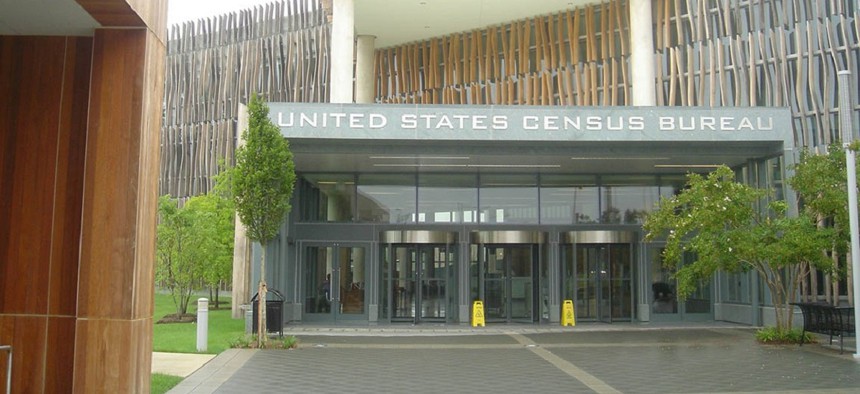For the First Time, Government Asks Public for Input on Census Design

U.S. Census Bureau
Recommendations from the public will help ensure that the Census Bureau is using the right tools and technology to reach all residents in the 2030 census.
The U.S. Census Bureau is asking the public for suggestions to help guide the planning and design of the 2030 census, with an eye toward soliciting recommendations on how to use new technologies, data sources and other tools to encourage more people to respond to the next census.
The request, published in a Federal Register notice on Aug. 17, comes as the Bureau continues to work on the early stages of its design selection phase for the next decennial census. The public feedback will help guide the initial operational design of the 2030 census, which the Census Bureau said it plans to decide in 2024.
“For the first time, the public can formally give input on planning and designing the next census,” a spokesperson for the Census Bureau said.
The notice cites a variety of factors that could affect participation in the 2030 census, including constrained fiscal environments, rapidly changing uses of technology, distrust in government, declining response rates, increasingly diverse populations and a growing mobile population that makes it difficult to locate individuals. The Census Bureau said in its request for comment that public feedback could help address these challenges and encourage more participation in the next count of U.S. residents.
“We need to develop the big picture plan for the census before the middle of the decade, so we have time to refine procedures and put technology and other infrastructure in place,” the Census Bureau spokesperson added. “As we get closer to 2030, we’ll be more limited in what we can change. This is why it’s critical to receive ideas from the public now as we lay the groundwork for the 2030 census.”
To help improve participation in the next census, the notice asks for recommendations on five specific areas of concern for the Census Bureau: reaching and motivating people to participate; using technology to make the census more user-friendly; finding new data sources to increase data quality; tailoring outreach strategies to contact more households; and providing more support to respondents.
The request for public comment comes after the 2020 census was impacted by the coronavirus pandemic and claims of political interference on the part of the Trump administration. Rep. Carolyn Maloney, D-N.Y., the chairwoman of the House Oversight and Reform Committee, introduced legislation in July to protect the decennial census from outside politicization, citing in part former President Donald Trump’s efforts to include a question about U.S. citizenship in the 2020 census.
A post-enumeration survey conducted by the Census Bureau following the 2020 census and released in March also found that the census undercounted minority individuals and overcounted those who identified as white and non-Hispanic. The Black population had a net undercount rate of 3.3%, while the Hispanic population was undercounted at a rate of 4.9% and Native Americans living on reservations had a net undercount rate of 5.6%. The non-Hispanic white population had an overcount rate of 1.64%, while the Asian population was overcounted at a rate of 2.62%.
Finding steps to address the underrepresentation of minority groups in the next count, the Census Bureau said, is a critical part of the request for public feedback at this stage of the process.
“With this input, the Census Bureau aims to better reach and count historically undercounted people, overcome challenges and encourage everyone to respond to the 2030 Census,” the Bureau said in a press release. “Public input is needed now so it can inform the Census Bureau’s decisions on the initial operational design, along with the findings of dozens of research projects underway.”
The 90-day response window for public comments closes on Nov. 15.






